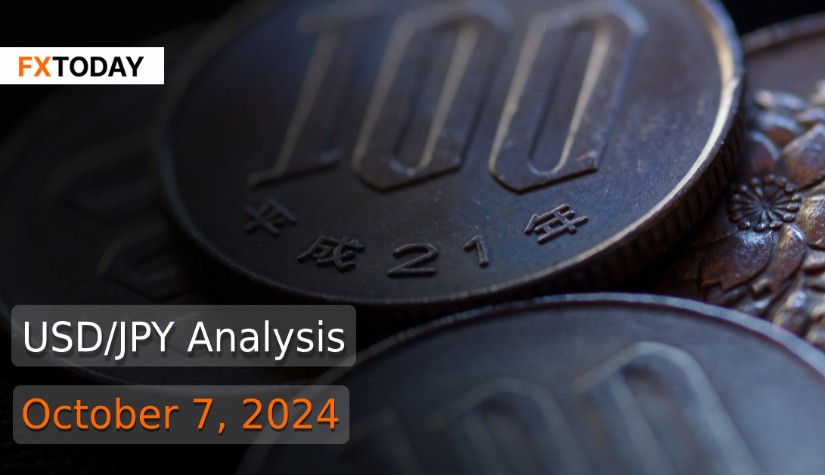Japanese Yen Hits New Low as Dollar Strengthens Amid U.S. Job Gains and BOJ Caution
The Japanese yen recently declined to 149.10 per dollar, a low not seen since August, as the U.S. dollar strengthened following robust American jobs data and escalating Middle East tensions. The yen's decline follows a 4% drop last week, the largest weekly loss since 2009, partly driven by Prime Minister Shigeru Ishiba's remarks indicating that Japan is not ready for imminent rate hikes.
Bank of Japan (BOJ) board member Asahi Noguchi furthered this cautious outlook, emphasizing that gradual rate adjustments would help avoid economic strain. While Japan ended negative rates in March and slightly raised borrowing costs in July, inflation has consistently surpassed the 2% target, yet low consumption levels signal lingering caution among households due to decades of deflation.
Despite moderate economic growth—2.9% annualized in Q2—the BOJ hesitated to make further adjustments in its September meeting, focusing instead on global risks, especially uncertainties surrounding the U.S. economy.
Additionally, political changes have influenced policy direction, as Prime Minister Ishiba, initially seen as a fiscal hawk, now emphasizes the need for accommodative policies until Japan fully exits deflation. This policy shift is a response to looming elections, with Ishiba directing his ministers to prepare an economic relief package aimed at easing rising living costs and stabilizing wages.
New economy minister Ryosei Akazawa echoed this cautious stance, stressing close BOJ-government coordination to prevent excessive tightening, while also signaling that inflation management and economic stability are now priorities. Recent interventions by Japan's top currency diplomat have also aimed to curb speculative activity on the yen, though they refrained from detailing current market interventions.
Analysts and BOJ officials now predict minimal changes in rates until the BOJ’s next quarterly review, with the October 30-31 meeting likely to reflect a wait-and-see approach. The potential for further BOJ rate hikes remains uncertain, tempered by external factors such as U.S. economic conditions and domestic political pressures, which could delay aggressive policy shifts until the BOJ is assured of economic resilience.
The International Monetary Fund (IMF) recommended that the Bank of Japan (BOJ) continue raising interest rates cautiously, aligning with inflation data and remaining data-dependent to meet its 2% inflation target. Julie Kozack, an IMF spokesperson, stated that rate adjustments should only proceed if inflation forecasts justify them.
Japan's bond market faces disruption due to BOJ's extensive asset purchases, which have caused a shortage in government bonds, impacting derivatives settlements. December's 10-year government bond futures will likely be affected by the bond scarcity, as 95% of this tranche is held by the BOJ.
Japan’s industrial production is anticipated to have declined in August, affected by weak export demand and a typhoon, although service-sector activity has grown for three consecutive months. The Tankan survey, monitoring business sentiment, revealed steady sentiment among manufacturers, indicating a path toward economic recovery despite uncertainty in manufacturing.
Tokyo’s core inflation rate met the BOJ’s 2% target in September, though it dipped slightly from August. Service-sector inflation remains steady, with prices driven up by higher labor costs in sectors such as temporary work and car repairs. BOJ Governor Kazuo Ueda is closely monitoring service inflation to assess if demand-driven price increases justify further rate hikes.
Factory output in Japan was also hindered in September due to weak exports and natural disasters, but retail sales showed moderate growth. Meanwhile, Japan's unemployment rate decreased in August, with the jobs-to-applicants ratio slightly declining.
The U.S. dollar surged to a seven-week high, marking its best weekly performance since September 2022, after an unexpectedly strong jobs report for September diminished expectations of significant rate cuts by the Federal Reserve. The robust U.S. labor data—showing 254,000 new jobs and a drop in the unemployment rate to 4.1%—led markets to reassess rate cut expectations, while wage growth remained solid.
The report also revised up previous employment figures for July and August, supporting the Fed's recent cautious stance on future cuts. Fed Chair Jerome Powell confirmed that the Fed would likely opt for more traditional, smaller rate cuts but emphasized there’s no rush for further reductions. Following the data, the likelihood of a 50-basis-point cut at the November meeting dropped to zero, with markets instead expecting a smaller, 25-basis-point reduction.
Additional data releases, including next week’s inflation report, will shape Fed rate expectations. Thursday's inflation data and producer price figures are expected to show further moderation, aligning with the Fed’s 2% target. The Fed’s September meeting minutes, due Wednesday, and speeches from several Fed officials next week will provide further insight into policy direction and the Fed’s approach to economic resilience amid easing inflation pressures.
Data for Technical Analysis (1H) CFD USD/JPY
Resistance : 148.58, 148.65, 148.76
Support : 148.36, 148.29, 148.18
1H Outlook
Source: TradingView
Buy/Long 1 If the support at the price range 148.16 – 148.36 is touched, but the support at 148.36 cannot be broken, the TP may be set around 148.58 and the SL around 148.06, or up to the risk appetite.
Buy/Long 2 If the resistance can be broken at the price range of 148.58 – 148.78, TP may be set around 149.11 and SL around 148.26, or up to the risk appetite.
Sell/Short 1 If the resistance at the price range 148.58 – 148.78 is touched, but the resistance at 148.58 cannot be broken, the TP may be set around 148.29 and the SL around 148.88, or up to the risk appetite.
Sell/Short 2 If the support can be broken at the price range of 148.16 – 148.36, TP may be set around 147.94 and SL around 148.68, or up to the risk appetite.
Pivot Points Oct 7, 2024 04:25AM GMT
|
Name
|
S3
|
S2
|
S1
|
Pivot Points
|
R1
|
R2
|
R3
|
|---|---|---|---|---|---|---|---|
| Classic | 148 | 148.18 | 148.29 | 148.47 | 148.58 | 148.76 | 148.87 |
| Fibonacci | 148.18 | 148.29 | 148.36 | 148.47 | 148.58 | 148.65 | 148.76 |
| Camarilla | 148.33 | 148.35 | 148.38 | 148.47 | 148.43 | 148.46 | 148.48 |
| Woodie's | 147.96 | 148.16 | 148.25 | 148.45 | 148.54 | 148.74 | 148.83 |
| DeMark's | - | - | 148.24 | 148.44 | 148.52 | - | - |
Sources: Investing 1, Investing 2
















